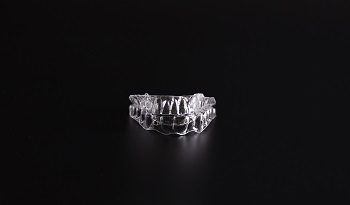Braces vs. Retainers
Contrary to popular belief, braces and retainers aren't always about improving your appearance. Misaligned teeth can cause pain and discomfort and make it difficult to keep teeth clean, leading to cavities and gum disease. In addition to straightening your teeth and preventing future dental issues, using braces or retainers may help realign your smile. In order to make an informed selection, your orthodontist will examine your needs and describe your options in detail for Braces vs. Retainers.
Which Is More Effective: Braces or Retainers?
Braces and retainers help align crooked teeth, and most individuals are aware of this. The differences between these dental appliances, however, are mostly unknown. Let's see how they stack up against each other.
Braces are significantly more durable now. A metal wire connects a set of small metal or ceramic plates to the teeth. The teeth gently take up the right place in the mouth by adjusting the force applied through this wire.
Retainers are comprised of molded plastic and wire. They work like braces to straighten and space teeth. Retainers aren't strong enough to repair multiple or severely misaligned teeth, but they can address small abnormalities. Retainers can keep newly straightened teeth in place until they are strong enough to stay independently.
It's clear from the above that braces and retainers aren't interchangeable and can't be used to cure every dental issue.
Braces vs. Retainers: An Overview:
Braces:

- The brackets and wires on your braces are bonded to your teeth during treatment. As a result, Braces are not moveable.
- Braces consist of brackets glued to the teeth, and these brackets have wires on top. The wires exert pressure on the teeth, guiding them into their proper position.
- 18-24 months is the typical age for braces to be worn. However, each situation is unique based on the severity of dental concerns.
- Braces better serve complex orthodontic issues than Retainers.
- Braces apply constant pressure on teeth to move them.
- First-time Braces can cause discomfort, soreness, and small bleeding. It takes time to toughen your mouth's delicate tissues against new hardware.
- Braces are durable, and it is not crucial to replace them during the whole treatment.
Retainers:

- Retainers are ideal for small orthodontic changes, such as shifting one or two teeth.
- They secure the teeth so surrounding tissues may adapt to the new tooth position.
- Retainers normally do not cause any discomfort to the interior of the mouth. However, the teeth may become sensitive as they shift into position.
- Retainers are replaceable because they are the most vulnerable to wear and tear.
- Retainers may be taken out and cleaned. When it's time to eat or clean your teeth, you may pop them out.
- Retainers are of two compositions:
- Retainers are clear plastic covering the whole tooth and extending to the mouth's rear.
- Implants are placed in the upper and lower jaws using a piece of molded plastic to fit in the mouth.
- After the removal of your braces, you'll wear retainers for some time. Your dentist may prescribe a retainer as a long-term solution to prevent your teeth from drifting back to their original locations.
Contact your Pinole dentist, Dr. Hoss Abar, DDS, MSD at Abar Orthodontics to learn more about braces and retainers.
Resource:
The Pros And Cons Of Composite Fillings
*This media/content or any other on this website does not prescribe, recommend, or prevent any treatment or procedure. Therefore, we highly recommend that you get the advice of a qualified dentist or other medical practitioners regarding your specific dental condition*
More To Explore
About Us
We believe that every patient deserves to feel confident about their smile. Years of experience creating beautiful and flawless smiles.
Opening Hours:
Monday - Thursday: 8:00 AM - 5:00 PM
Friday: 8:00 AM - 12:00 PM
Saturday - Sunday: Closed
Abar Orthodontics, Pinole, CA
1500 Tara Hills Drive., Suite 204
Pinole, CA 94564
Abar Orthodontics, San Leandro, CA
145 East 14th street., #100
San Leandro, CA 94577
© 2025Abar Orthodontics | All rights reserved | Powered by:Vigorant, Inc.
